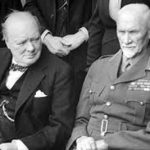 The term is self-contradictory, but the committee’s founders could hardly call it the ‘Committee of Public Danger’. It lasted only from 1793 to 1795 but greatly damaged France’s reputation and standing in the eighteenth century world.
The term is self-contradictory, but the committee’s founders could hardly call it the ‘Committee of Public Danger’. It lasted only from 1793 to 1795 but greatly damaged France’s reputation and standing in the eighteenth century world.
This was the name chosen for the actual government of France at the dreadful height of the Terror during the French Revolution. The latter had not been going as well as the Jacobins and Girondins had expected; in fact the country faced problems that seemed about to overwhelm their precious revolution, which, like all revolutions without exception, was organised with the replacement of one palpably bad administration by a worse one. The organisers in this case were from the middle class, claiming to rescue the poor suffering agricultural and urban worker from their forced enslavement to the upper classes. The French middle classes were represented by two political clubs, the Jacobins and Girondins. As usual in these cases, these representatives were self-appointed and hated each other.
Following defeat by the Austrians at Neerwinden in March, 1793, the defection of the French general to the enemy, and ever-rising inflation, the Convention decided to take matters in hand by setting up ‘A Committee of Public Safety’, mainly to supervise ministers, whose authority it superseded.
On or around 2 June a new CPS was declared, in which all twelve members were, not by coincidence, Jacobins. All the leading Girondin deputies were arrested. France therefore had the first strong government since the Revolution began. The new Committee smelled blood, and began a series of trials of prominent persons, among them the ex-Queen, Marie-Antoinette.
Their offence, apart from being Girondins or being born noble, was treason. Thirty-one Girondin deputies languished (not for very long) in jail.
Federal revolts were soon crushed, and inflation began to lessen. The Convention gave full powers to a Committee of General Security, responsible for police and internal security (a kind of French FBI), and the Committee itself received even greater powers. It controlled ministers, generals, foreign policy and even local government chiefs of the local communes and departments, who were ‘elected’ and placed under ‘national agents’, themselves appointed by and responsible to the central government. These were powerful men indeed. The nineteenth century authoress Baroness Orzcy invented one for her Scarlet Pimpernel adventures, calling him Chambertin.
Of course all this was directly contrary to the principles of 1789, when there had been decentralisation, all posts electable, and a separation of legislative from executive authority. It was not new however, as this kind of reversal of principles always occurs at some time or other during ‘revolutions of the People’. Precisely the same thing happened in the Russian Revolution (q.v.).
Jacobin lawyer Robespierre justified it all to the French people by insisting that a dictatorship was necessary until foreign and national enemies of the Republic were destroyed. And he meant ‘destroyed’.
The Committee started the heads rolling with the execution of formerly well-placed friends of Robespierre like George-Jacques Danton and Jacques-René Hebert, accompanied by the families and friends. The Law of Prairial (10 June, 1794) encouraged the Terror, which was given the new name of ‘The Great Terror’, though nomenclature meant little to the victims. Now the Convention (Government) was simply a tool of the Committee. Thousands of ‘dissidents’ made the journey by tumbrill to the guillotine.
The population, noble, middle class or virtual serfs, were not impressed by the Great Terror, nor the rivers of blood rushing from an over-used guillotine. But they were terrified by it. The two Committees were indefatigable unless they fell out between themselves. This could safely be left to Robespierre, who accused colleagues of ‘a conspiracy against public liberty’. The inevitable result of this was that prominent members of the Committee turned the tables on their lawyer and he died under the falling blade, which he had proposed in the first place.
(For much more information about the French Revolution, its leaders and victims see this website under the chapter heading History of France.








Leave A Comment